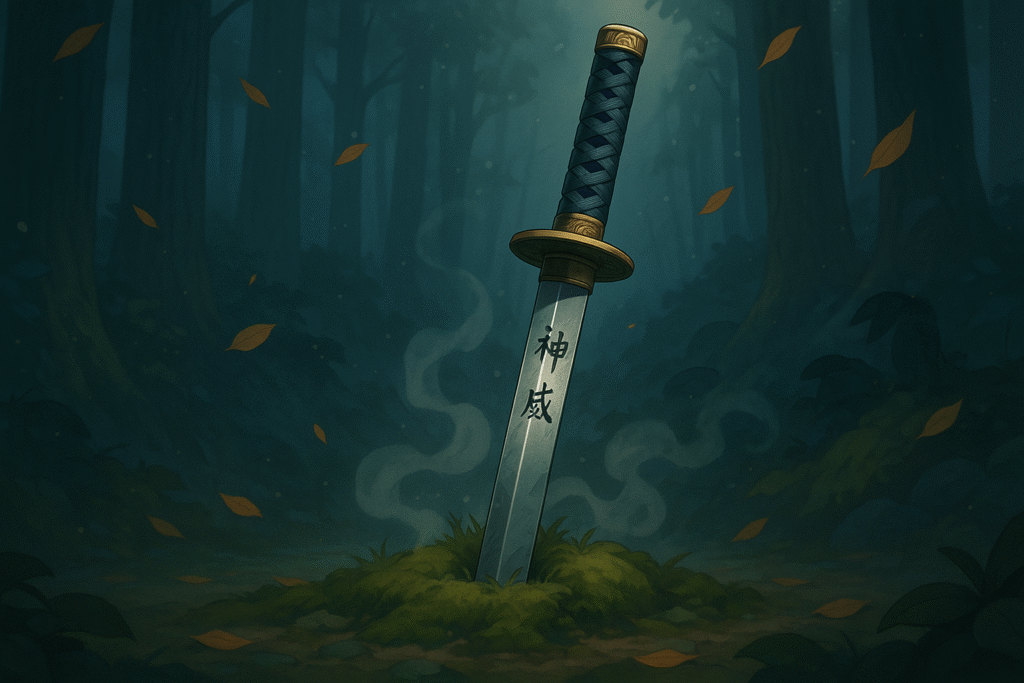Have you ever wondered about the mythical creatures that once served as guardians against disease and misfortune in ancient Japan? Among the vast pantheon of Japanese yokai (supernatural beings), the Hakutaku (白澤, はくたく) stands out as one of the most revered and mysterious divine beasts. With its distinctive nine eyes and six horns, this ox-like creature has fascinated Japanese folklore enthusiasts for centuries.
What is a Hakutaku?
The Hakutaku is an auspicious mythical creature from Japanese folklore that resembles a white ox or bull with extraordinary features. This divine beast possesses:
- Nine eyes (three on its face and three on each side of its body)
- Six prominent horns
- A white, ox-like body
- The ability to speak human languages
- Unparalleled knowledge about all supernatural creatures
In Japanese, the name “Hakutaku” (白澤) literally translates to “white marsh,” derived from its Chinese origins. This remarkable creature is not just a fantastical being but a symbol of wisdom, protection, and good fortune.
Origins of the Hakutaku: From China to Japan
Like many elements of Japanese mythology, the Hakutaku originated in Chinese folklore, where it is known as the Bai Ze (白泽). This divine beast made its way to Japan during cultural exchanges between the two countries and gradually became integrated into Japanese supernatural beliefs.
What makes the Hakutaku particularly special is its selectiveness in appearing to humans. According to legends, this divine creature only manifests itself during eras of peace and prosperity, and specifically to virtuous rulers. This selective appearance made encounters with the Hakutaku extremely rare and significant events in historical narratives.
The Legendary Encounter with the Yellow Emperor
The most famous tale involving a Hakutaku comes from ancient China, dating back to the reign of the legendary Yellow Emperor (Huangdi, 2697–2597 BCE). As the story goes:
During an imperial tour of his eastern territories, the Yellow Emperor climbed a mountain near the sea where he unexpectedly encountered a Hakutaku. The divine beast spoke to the emperor, revealing the existence of 11,520 different types of yokai and supernatural beings.
This pivotal meeting resulted in the creation of the “Hakutaku-zu,” an encyclopedia documenting every type of supernatural creature, their harmful influences, and methods to counter them. Essentially, it served as the world’s first comprehensive guide to supernatural threats and their remedies.
Unfortunately, this invaluable text has been lost to time, with no surviving copies known to exist today. Had it survived, it might have been the most comprehensive supernatural reference in history!
The Hakutaku in Japanese Culture
Protective Talismans and Medicine
During Japan’s Edo period (1603-1867), the Hakutaku achieved tremendous popularity as a protective symbol. Images of this divine beast were widely sold as talismans that could:
- Ward off evil spirits
- Prevent disease
- Protect against misfortune
- Keep malevolent yokai at bay
The connection between the Hakutaku and medicine became particularly strong following a legendary sighting on Mount Tateyama in Toyama Prefecture. According to this tale, a creature called “kutabe” (an alternate name for Hakutaku) appeared to villagers and warned them about an impending plague. The divine beast taught the villagers how to create protective talismans that would shield them from the disease.
After this intervention saved countless lives, the Hakutaku became revered as a guardian deity of medicine and health. Even today, some traditional Japanese medicine practitioners honor the Hakutaku as a symbol of healing knowledge.
Knowledge and Wisdom
Perhaps the most defining characteristic of the Hakutaku is its vast knowledge. Unlike many other yokai that bring mischief or harm, the Hakutaku uses its wisdom to benefit humanity. Its comprehensive understanding of all supernatural creatures makes it uniquely qualified to help humans defend against supernatural threats.
This association with knowledge is why the Hakutaku became a symbol of wisdom and learning in Japanese culture. Some scholars and educational institutions have adopted the Hakutaku as an emblem, representing the pursuit of knowledge and understanding.
The Hakutaku in Modern Japan
While belief in yokai has diminished in contemporary Japan, the Hakutaku continues to appear in various aspects of popular culture:
- Anime and manga series featuring mythological creatures
- Video games that draw inspiration from Japanese folklore
- Art exhibitions celebrating traditional yokai
- Mascots for educational institutions and libraries
- References in modern literature exploring Japanese mythology
For those interested in deepening their understanding of Japanese language and culture, learning about creatures like the Hakutaku can provide valuable cultural context. In fact, many students of Japanese find that understanding yokai and other cultural elements helps them connect more deeply with the language. If you’re currently studying for the JLPT N5 exam, our comprehensive JLPT N5 Study Guide includes cultural notes about important mythological concepts that appear in everyday Japanese expressions.
Want to explore Japan’s culture?
Discover Japan’s rich culture, traditions, and hidden gems with our expertly crafted guides. Get insider tips on travel, food, and history. All for free!
Hakutaku vs. Other Divine Beasts
The Hakutaku belongs to a category of holy beasts in East Asian mythology. How does it compare to other divine creatures?
| Divine Beast | Origin | Appearance | Symbolic Meaning |
|---|---|---|---|
| Hakutaku | Chinese/Japanese | White ox with nine eyes and six horns | Knowledge, protection against evil |
| Kirin (麒麟) | Chinese/Japanese | Deer-like with scales and a dragon’s head | Prosperity, serenity, wisdom |
| Baku (獏) | Chinese/Japanese | Chimeric dream-eater | Protection against nightmares |
| Hōkō (方口) | Japanese | Multi-tailed wolf | Direction, guidance |
While all these creatures are revered, the Hakutaku stands out for its specific role as a keeper of knowledge about supernatural beings and protector against their harmful influences.
How to Pronounce “Hakutaku”
The proper pronunciation of Hakutaku in Japanese is:
- Japanese: 白澤 (はくたく)
- Romaji: Hakutaku
- Pronunciation Guide: Hah-koo-tah-koo
The word consists of two kanji characters:
- 白 (haku) meaning “white”
- 澤 (taku) meaning “marsh” or “swamp”
Q&A About Hakutaku
What is a Hakutaku?
A Hakutaku is a divine beast from Japanese mythology that resembles a white ox with nine eyes and six horns, known for its vast knowledge of supernatural creatures.
Where did the Hakutaku originate?
The Hakutaku originated in Chinese mythology as the Bai Ze before being adopted into Japanese folklore.
Why were Hakutaku images used as talismans?
Hakutaku images were used as protective talismans because the creature’s comprehensive knowledge of yokai was believed to ward off evil spirits and disease.
When does a Hakutaku appear to humans?
A Hakutaku only appears during times of peace and prosperity, and specifically to virtuous rulers or in times of great need.
How is the Hakutaku connected to medicine?
The Hakutaku became associated with medicine after it allegedly appeared on Mount Tateyama and saved villagers from a plague by teaching them how to create protective talismans.
Conclusion
The Hakutaku represents one of the most fascinating intersections of wisdom, protection, and supernatural lore in Japanese mythology. Unlike many fearsome yokai, this divine beast stands as a benevolent guardian of humanity, using its vast knowledge to protect against supernatural threats.
Whether you’re a student of Japanese language, an enthusiast of folklore, or simply curious about world mythologies, the story of the Hakutaku offers valuable insights into traditional Japanese beliefs about knowledge and protection. This nine-eyed, six-horned divine beast continues to captivate our imagination with its unique appearance and profound symbolic meaning.
As we explore these cultural elements, we gain not just knowledge about ancient beliefs, but also deeper understanding of the cultural context that shapes modern Japan. The Hakutaku reminds us that wisdom itself can be our greatest protection against the unknown.
Note: If you’re interested in learning more about Japanese language and culture, check out our JLPT N5 Study Guide for beginners. It includes vocabulary, grammar, and cultural notes to help you master the foundations of Japanese language.
Love Japan? Stay in the Loop!
Get the best of Japan straight to your inbox: language, culture & travel insights!




